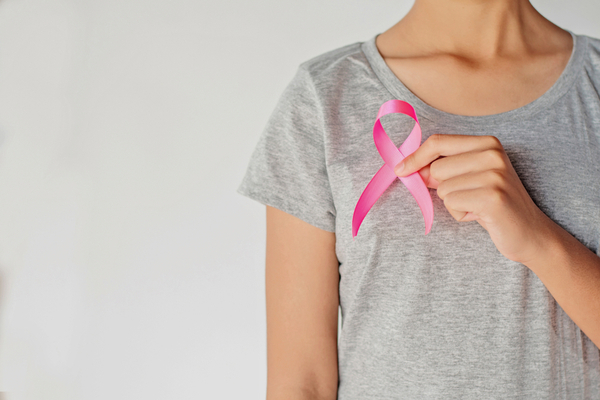Every year, millions of women are diagnosed with breast cancer. The ratio is increasing day by day, although it is estimated that every 1 in 8 women is at risk of developing breast cancer during her life span. However, the outlook for women with breast cancer is steadily improving. Public awareness is playing a major role in early detection, advance treatment and increased survival rate. This article has summarised all you need to know about breast cancer.

Understanding Breast Cancer
The very basic question everyone needs to know is what is breast cancer? This particular type of cancer develops in the breast where breast cells start to develop uncontrollably. Different types of breast cancer mainly depend upon the type of breast cells that undergo metastasis.
Previously, it was assumed that breast cancer only developed in older women. But recent researches have proved that to be incorrect. The risk of breast cancer in younger women is about 1 in 208 women[1]. Although the odds are low, the risk is still there. The chances can increase depending on individual genetics, lifestyle and family history.
Risk Factors To Consider
Being the most common cancer found in women and the second leading cause of death in women, one should know the risk factors. Here are some risk factors for developing breast cancer.
Women between 20 to 30 years age are more likely to get diagnosed with breast cancer if they have a positive family history for breast cancer or received any radiation treatment to the chest or breast before age 30.[2]
Other risk factors such as having dense breast tissues mostly in younger women can also contribute to developing breast cancer in early ages. If breast cancer is diagnosed at a young age, there are chances of it quickly spreading to other body parts. Those women who have a first menstrual period before age 12 or first full-term pregnancy after age 30 are more likely at risk.
Obesity is also one of the risk factors. Some research show that obese women are at greater risk of developing breast cancer sooner or later in their life. Drug abuse and alcohol consumption can’t be ignored as they can alter normal hormonal activity.
Signs and symptoms
In younger women, breast cancer is typically difficult to diagnose. However, visible symptoms are not necessary in every case as symptoms can vary from person to person.
Typical signs and symptoms may include a mass or lump in the breast area.[3] The changes in the skin, shape, nipple discharge, pain, tenderness, or uneven breasts are also visible indicators
Ways to reduce breast cancer
- Know the risk factors
- Know the warning signs
- Routine screening
- Be persistent and speak up
- Find the right doctor
Breast Cancer Treatments
There are plenty of treatment options available today in order to treat breast cancer. Advancement in the medical field has improved the outlook for those suffering from breast cancer. Clinical trials are also carried out that will improve survival odds even more in near future.
1) Surgery
Breast-conserving surgery is the mainline treatment option for various breast cancer. It removes the cancerous part of the breast along with some healthy tissues. Another surgical option is mastectomy that removes the entire breast. [4]
2) Radiation Therapy
In this procedure, high energy radiations are used to kill the cancer cells. However, the treatment has its side effects.
3) Chemotherapy
Chemotherapy is a widely used method for killing cancer cells. The drug is infused intravenously or in the form of pills. It is also given after surgery. The side effects of chemotherapy include fatigue, pain, diarrhoea, hair loss, nausea and vomiting.
4) Hormone Therapy
The breast cancer cells activated by female hormones estrogen and progesterone are often treated with hormonal therapy. This therapy slows or stops the growth of hormone receptors.
5) Targeted Drug Therapies
Targeted therapy is a new treatment regimen used nowadays. These therapies stop specific protein from stimulating cancer cells. They are beneficial in terms of fewer side effects. [5]
Conclusion
If you see any signs of a breast abnormality, consult a doctor immediately for medical advice. Be your own health advocate, ask your doctor every tiny detail about your condition. Don’t be afraid to take a second opinion.
Learn thoroughly about breast cancer before making an informed decision about your treatment option. Moreover, online research can help you find the best treatment choices available. Always be cautious of online scams.
References
- “Breast Cancer Risk in American Women.” National Cancer Institute. https://www.cancer.gov/types/breast/risk-fact-sheet.
- “Breast Cancer Risk in American Women.” National Cancer Institute. https://www.cancer.gov/types/breast/risk-fact-sheet.
- “What Are the Symptoms of Breast Cancer?” Centers for Disease Control and Prevention. September 14, 2020. https://www.cdc.gov/cancer/breast/basic_info/symptoms.htm.
- NHS Choices. https://www.nhs.uk/conditions/breast-cancer/treatment/.
- “Targeted Therapy.” National Breast Cancer Foundation. September 19, 2019. https://www.nationalbreastcancer.org/breast-cancer-targeted-therapy.
